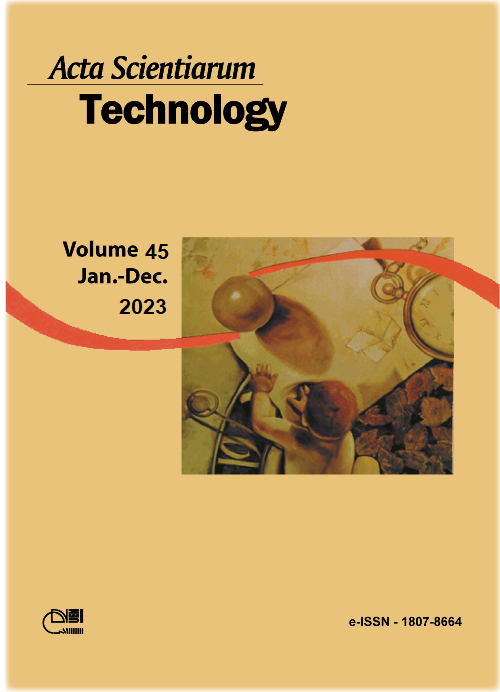Lifetime of forage grasses submitted to different water regimes using survival analysis
DOI:
https://doi.org/10.4025/actascitechnol.v45i1.60820Palavras-chave:
grass survival; mortality; survival analysis; water stress.Resumo
Forage plants are considered one of the main factors for livestock development, for they present perennial growth, resistance to drought, adaptation to hot climate regions, and wide soil diversity. The water deficit causes changes in their anatomy, physiology, and biochemistry, which can affect all stages of development and productivity. For these reasons, it is necessary to evaluate the lifetime of forage plants under water stress conditions. The design used was a factorial scheme, consisting of two types of grasses, and five levels of water replacement, with ten replications. During the experimental period, grasses were evaluated daily, with more than 70% of leaf area in senescence being considered a dead plant the one with more than 70% of leaf area in senescence. Urochloa mosambicensis lifetime was of 61 days for grasses that were not irrigated, 131 and 195 days for those that received 25% and 50% of field capacity, and greater than 240 days for those that were irrigated with 75 and 100% of field capacity. Digitaria pentzii lifetime was of 54 days for grasses that were not irrigated, 117 and 152 days for those that received 25 and 50% of field capacity, and greater than 240 days for those that were subjected to water regime 75 and 100% of field capacity. Irrigation with 25 and 50% of field capacity doubles and triplicates, respectively, the lifetime of grasses when compared to plants that did not receive irrigation. Irrigations with 75% or more of field capacity do not promote grass mortality.
Downloads
Referências
Downloads
Publicado
Como Citar
Edição
Seção
Licença
DECLARAÇíO DE ORIGINALIDADE E DIREITOS AUTORAIS
Declaro que o presente artigo é original, não tendo sido submetido í publicação em qualquer outro periódico nacional ou internacional, quer seja em parte ou em sua totalidade.
Os direitos autorais pertencem exclusivamente aos autores. Os direitos de licenciamento utilizados pelo periódico é a licença Creative Commons Attribution 4.0 (CC BY 4.0): são permitidos o compartilhamento (cópia e distribuição do material em qualqer meio ou formato) e adaptação (remix, transformação e criação de material a partir do conteúdo assim licenciado para quaisquer fins, inclusive comerciais.
Recomenda-se a leitura desse link para maiores informações sobre o tema: fornecimento de créditos e referências de forma correta, entre outros detalhes cruciais para uso adequado do material licenciado.



















